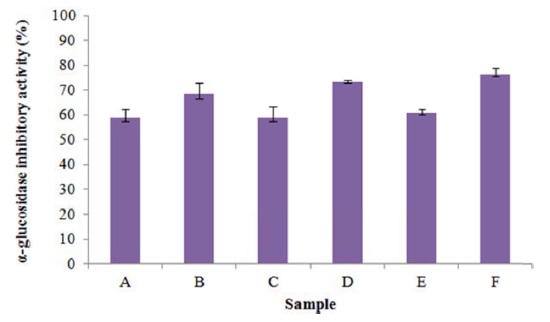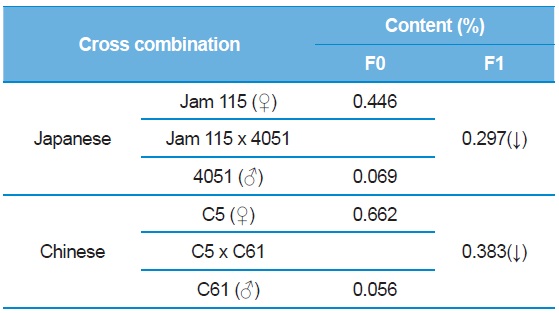



Flavonoids exhibit a wide variety of biological activities, including antiviral, antibacterial, anti-inflammatory, and antioxidant actions (Javed
The silkworm,
Similarly, silkworm powder is also rich in useful components and has long been favored as an antidiabetic agent, and for its various amino acids and flavonoids. However, the flavonoid contents of silkworm powder have not been tested using scientific methods. To date, to our knowledge, no studies have shown the extraction of bioactive compounds (including rutin) from silkworm powder except for DNJ. The aim of this study is to determine the main flavonoid (rutin) using high performance liquid chromatography (HPLC). In addition, we wanted to provide a basis for understanding rutin content in various silkworm species. Furthermore, our goal was to create a database for silkworm genetic resources utilizing morphological and, genetic characteristics data.
Silkworm resources were collected from the Sericulture and Apiculture Division for the Department of Agricultural Biology, RDA in Suwon, Republic of Korea. Both spring and autumn reared silkworms of 168 varieties were used for the rutin analysis (Japanese 64; Chinese 69; European 28; miscellaneous species 5; Korean 2). The freeze-dried 5th instar, 3-day-old silkworms (Ilshin Lab Co., Ltd) were ground and used within 48 h.
>
Sample preparation procedures
About 1 g of larva powder was mixed with 20 mL methanol, followed by vigorous shaking at 80℃ for 1 h, and then treated with sonication for 30 min. These extracts were cooled to 4℃ and subjected to preliminary filtration. The pellet was treated again by repeating the above steps, and the extracts were diluted to 50 mL methanol. The extracts were filtered using a 0.45 mm Millipore filter and used for HPLC analysis.
In order to measure rutin within the analytes, HPLC (Waters e2695), Waters 486 Tunable Absorbance UV/visible detector (Em 254, EX 322), and Waters Nova-Pak C18 column were used. The absorbance of the effluent was monitored at 355 nm and flow rate was 1 mL/min. The mobile phase used was on 2.5% acetic acid : methanol : acetonitrile = 70:10:20 (V/V/V). The flow rate was 0.6 mL/min. The standard material was rutin (SIGMA), and the rutin content was calculated (Fig. 1.).
>
Rutin contents of 168 silkworm varieties
There are many reports on rutin in
By using data acquired from this study, we built a database of silkworm and mulberry resources with morphological and genetic characteristics data. Moreover, certain bioactive compounds have been receiving increasing attention. We analyzed rutin content in addition to the base genetic information by using 168 varieties of silkworms. All silkworms were freezedried 5th instar species that were 3 d old.
Results showed that overall, Jam 115 had the highest rutin content with 0.446% (Table 1). In contrast, the 4051 had the lowest rutin content with 0.069%. Of the Chinese silkworm types, C5 had the highest rutin content (0.662%) while C61 had the lowest of all varieties with 0.056% (Table 2).
[Table 1.] Rutin contents for Japanese silkworm varieties
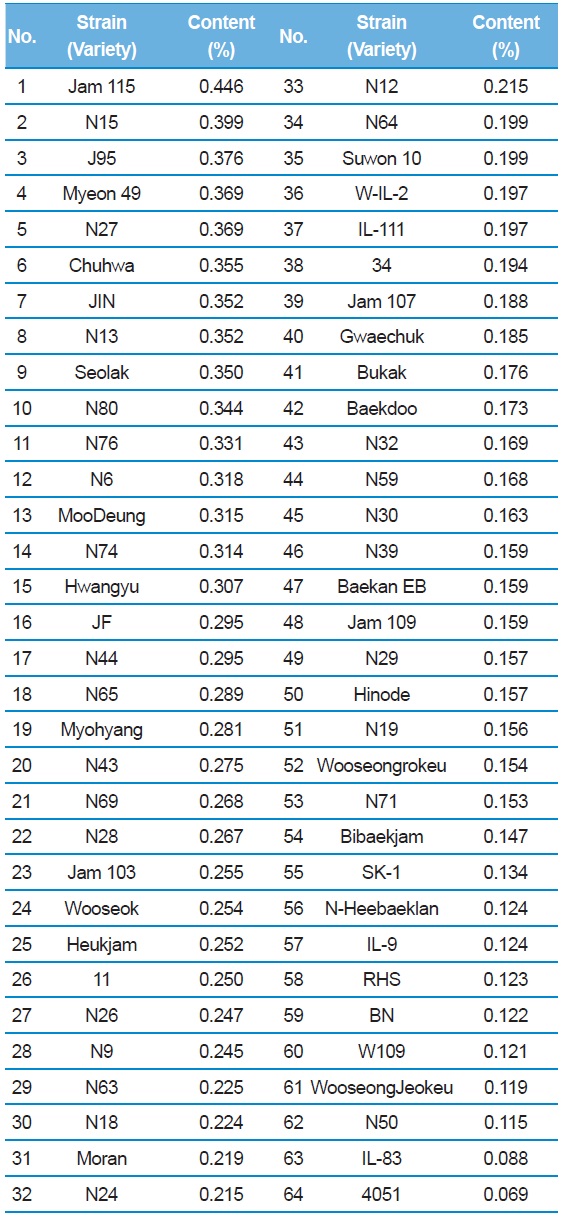
Rutin contents for Japanese silkworm varieties
[Table 2.] Rutin contents for Chinese silkworm varieties
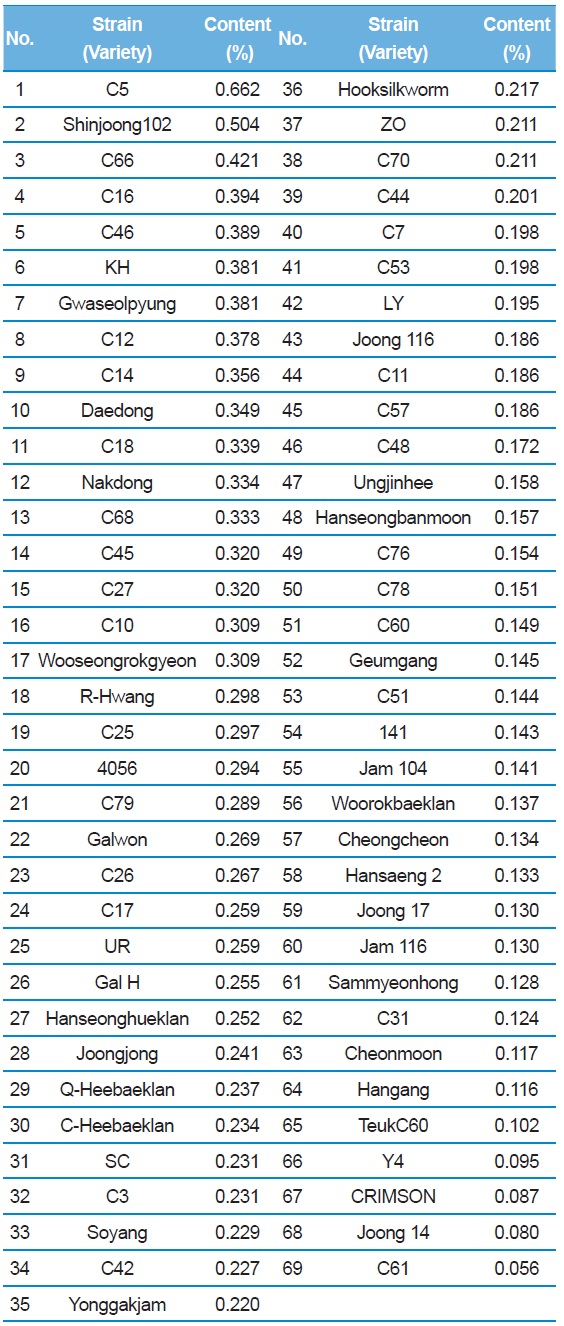
Rutin contents for Chinese silkworm varieties
Of the European breeds, E58 had the highest rutin content (Table 3). The rutin content of the Korean varieties was relatively 0.319% (Sun 3 ho) and 0.209% (Sammyeonhonghoibaek) (Table 3). On the other hand, the highest rutin levels of the miscellaneous varieties were found in Jamsaeng 1 Ho (0.613%). For comparison of geographical origins of the silkworm gene resource, rutin concentration ranking was as follows: Chinese (C5) > miscellaneous varieties (Jamsaeng 1 Ho) >Japanese (Jam 115) > European (E58) > Korean (Sun 3 ho) (Table 3). In addition, no discernable difference in rutin content was noted with regard to blood, cocoon, or egg color of the silkworm.
[Table 3.] Rutin contents for various of silkworm varieties
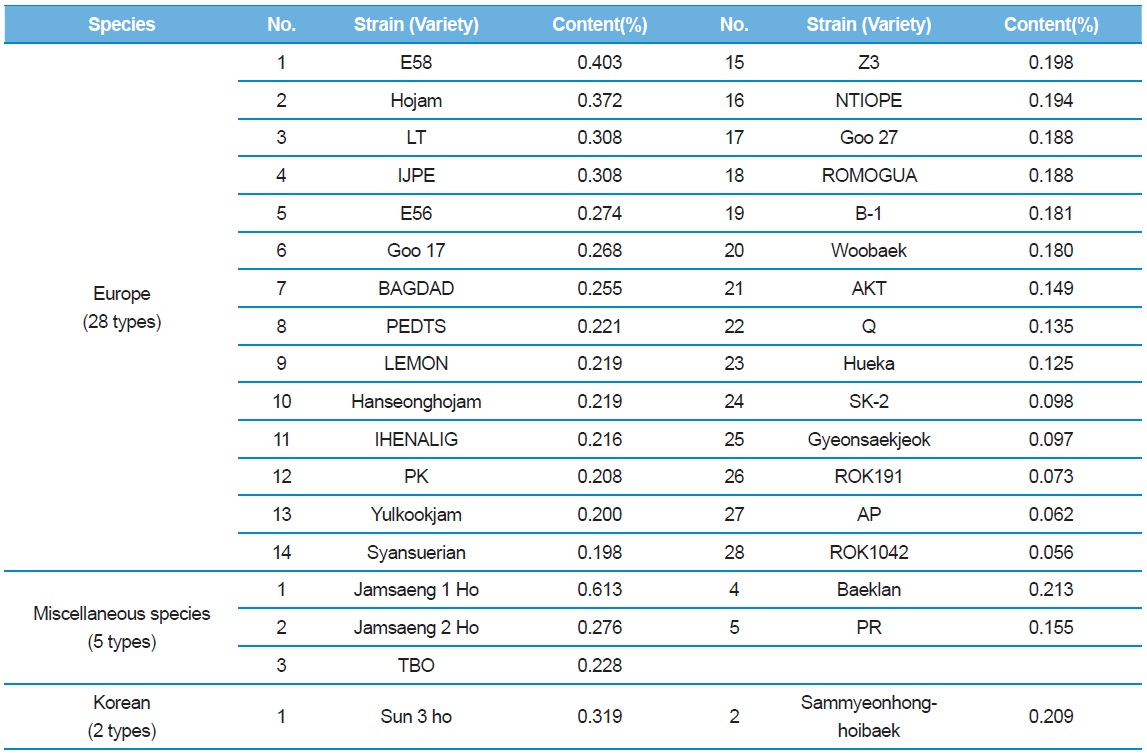
Rutin contents for various of silkworm varieties
Many flavonoids have been identified from the root bark of the mulberry tree. The leaves of
>
Rutin contents produced by crossbreeding
The purpose of the cross-breeding experiment was to optimize hybrid combinations that yielded rutin concentrations higher than that by the basic silkworm larvae. The rutin contents of various silkworm varieties were investigated with results indicating a difference among the various silkworm varieties. When the varieties Jam 115 and 4051 were hybridized, the rutin content of the offspring was lower than the parent Jam 115. Likewise, in a cross between the Chinese breeds C5 and C61, the rutin content was lower in the hybrid than in the C5 parent (Table 4). These results show that the crossbreeding tests were not effective in the production of offspring with sustained or improved rutin concentrations. The breeding objectives employed in different countries where sericulture is practiced remained quite different for many of the traits and also to provide productive hybrid strains specifically for commercial exploitation (Nagaraju, 2002). In addition, hybrid silkworm strains are recommended for large scale laboratory and intensive, commercially viable sericulture operations. Regarding the concentration of DNJ in silkworm powder, the DNJ contents produced by crossbreeding silkworm were higher than those in non-crossbreeding silkworm (Ju
[Table 4.] Rutin contents by silkworm cross-breeding

Rutin contents by silkworm cross-breeding
In conclusion, obtaining information about the concentration of functional materials in silkworm powder could contribute to the development and promotion of processed, functional products derived from silkworm.
